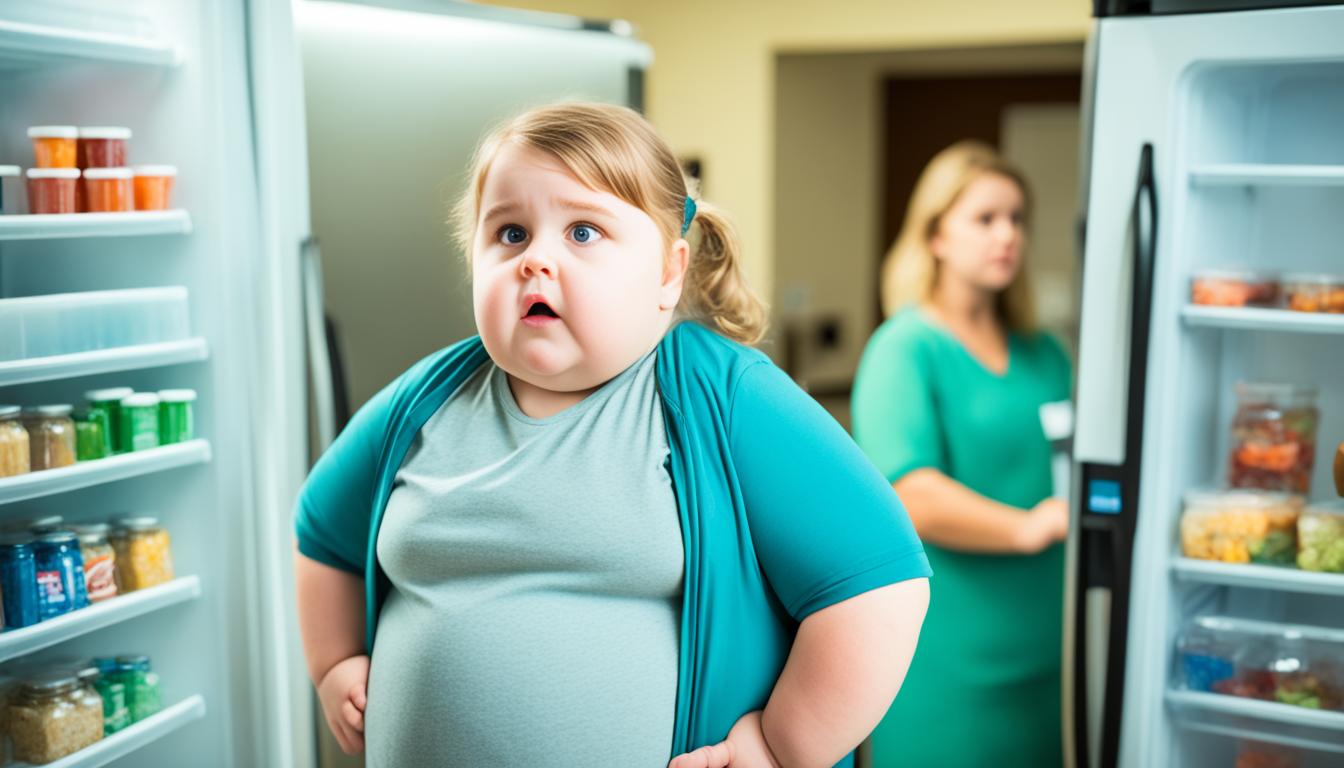Childhood obesity is now a major issue in the U.S. In the past 40 years, the number of obese kids has grown a lot. In 1978, only 5.5% of America’s kids were obese. But by 2016, this number had increased to 18.5%. It’s predicted that by 2021, as many as 22% of U.S. kids will be obese. Sadly, this problem isn’t just in the U.S. It’s happening in many low to medium-income countries too.
Obesity in children is complex. It’s influenced by many things like genes, where they live, their habits, and their health. Kids with obesity face many risks, including heart disease and diabetes.
Doctors diagnose child obesity using BMI charts from the CDC. BMI is only part of a kid’s health story. In treating obesity, it’s crucial to look at the whole picture. This means changing lifestyles, using medications, or sometimes even surgery. A new method, stem cell therapy, might also help in the fight against childhood obesity.
Key Takeaways:
- Childhood obesity rates have more than tripled in the last four decades in the U.S.
- The prevalence of childhood obesity is also increasing in many low-income and middle-income countries.
- Childhood obesity is caused by a variety of factors including genetics, environment, behavior, medical conditions, medications, sleep patterns, and socioeconomic inequalities.
- Diagnosing childhood obesity involves using BMI-for-age percentile curves.
- A comprehensive approach is necessary to address childhood obesity, including lifestyle changes, medication, and in some cases, surgery.
- Stem cell therapy is an innovative treatment option for pediatric weight challenges.
Causes of Childhood Obesity
Childhood obesity has many causes like genes, how we act, our surroundings, some health issues, the medicine we take, how we sleep, the money we have, new research on genes (epigenetics), the recent pandemic, and how much time we spend in front of screens. Figuring out these reasons is key to stopping and dealing with obesity in kids.
Genetic Factors
Genes are part of why some kids become obese, with research hinting that 40% to 70% is because of these. But, genes aren’t the whole story behind the obesity rise. It’s the mix of genes and the world around a child that really matter.
Behavior and Environment
Bad eating and not moving enough are big players in obesity. So are too much screen time and not playing or exercising. Factors like not having fresh food around, few chances to be active, and seeing too many high-calorie foods make things worse.
Medical Conditions and Medications
Some health issues and certain medicines can make obesity more likely in children. This includes problems with hormones, health syndromes, and some types of drugs. Doctors need to think about these issues when checking for obesity risk.
Sleep Patterns
Not getting enough sleep or having bad sleep patterns can be tied to obesity in kids. It messes with how our hunger and fullness hormones work, leading to eating more. It also can slow down how our bodies burn off energy, adding to weight gain.
Socioeconomic Inequalities
How much money a family has can affect obesity rates in kids. Those with fewer financial resources often deal with more obesity. This is because they might not easily get to healthy foods, safe places to play, and good health education.
Epigenetic Factors
Epigenetic changes are about how our genes can be updated by our surroundings and choices. These changes can affect how likely a child is to be obese. Things like what a mother eats during pregnancy and a child’s early life experiences can make these changes.
COVID-19 and Screen Time
The COVID-19 pandemic has changed many kids’ routines, leading to less moving and more sitting. More home time can mean more screen time, which is linked to higher obesity risks. It’s vital to find healthy ways to spend time and keep active during the pandemic.
Beating childhood obesity calls for a wide plan that deals with the many causes. Boosting good eating habits, making more chances to stay active, improving the way we get to healthy foods, and fighting money differences are key steps. This can help lower obesity and better children’s health.
Health Risks and Treatment of Childhood Obesity
Childhood obesity is a serious health risk. It can lead to heart disease, diabetes, high blood pressure, and more. Obese kids might have these problems as adults too. Obesity can make breathing harder, cause asthma, and affect girls’ periods. It can also make kids feel sad and not confident.
We need to tackle this issue in many ways. Changing what kids eat, how much they move, and how they sleep is key. These changes can help kids manage their weight for the long term. Sometimes, doctors might suggest medicine or surgery for very heavy kids.
There are new, promising ways to fight obesity, like stem cell therapy. It’s vital to spot and help kids who are overweight early. This can stop health issues and help with their emotions. Solving the obesity problem means making changes in the family, in healthcare, and in the community. This whole-team effort is crucial to success.

